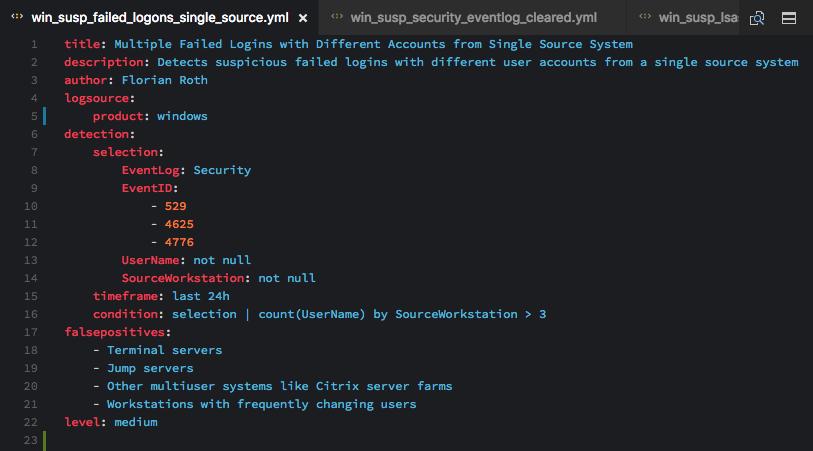


About Sigma Rules…īeing a generic signature format, Sigma Rule is open and allows you to describe relevant log events straightforwardly, being very flexible, easy to write, and applicable to any kind of log file. Sigma Rule, therefore, is used (in this case) to document the detection use case.
#SPLUNK SIGMA RULES HOW TO#
Materializing a use case by using Sigma Rules should be a simple, objective, and generic proposal to document a threat detection scenario and support the standardization of the Incident Handling process.ĭo you know when you discover and learn a new programming language? Well, strictly speaking, knowing how to code is merely part of the process and, if we dare to say it, is of lesser importance when compared to the problem you’re going to solve and how you hope to solve it with that new skill and syntax. Its structure, and thus its syntax, is just the means by which the detection engineering process is anchored. It’s important to note that when using the Sigma standard, it’s not just a matter of adopting a market solution or making use of a structured notation for documentation purposes that will form part of a knowledge base. (Created by the author) Sigma Beyond Syntax

It will be the translation of the design (use case) into a structured language (YAML) that can, in the next step, be materialized into one or more rules for one or more SIEMs targets. The Sigma Rule will be the bridge between these two worlds (or moments). The use case is at a level of abstraction that cannot be put or written into a rule in SIEM. We’ll cover this with more details in the next article of the series, but for now, it’s important to define what a use case is and how it relates to the Sigma Rule.Īn attack scenario assumes several stages the attack must pass through to compromise a system, and therefore several use cases can be implemented to detect and prevent the attack at different stages.Īnd what does the Sigma Rule have to do with this? Very simple. A little bit about Use Cases DetectionĪlso in 2016, the subject of “Use Cases Detection” was already present in international Cyber Defense conferences, being pointed out as a topic, albeit somewhat in its creation process. To put a starting point on this story, the Sigma Project emerged in late 2016, created by Florian Roth (Twitter: and Thomas Patzke (Twitter: offering a standardized format for exchanging files that designate detections, similar to the YARA Rules proposal, however, using log sources as raw material. Historical Backgroundīefore talking about Sigma Rules it’s important to be clear in what context it can be – and even more important – it needs to be used within the threat detection world.
#SPLUNK SIGMA RULES PROFESSIONAL#
A practical, real-world example we developed.īy the end of the article, we hope the security professional can be convinced of the benefits of using Sigma Rules and start to adopt this format to compose their library of use cases detection.The main benefits and challenges of Sigma Rules.Importance of Sigma Rules in Use Cases.In this article we’ll start by bringing an introductory scope on the topic of Sigma Rules, addressing the following subjects:
#SPLUNK SIGMA RULES SERIES#
We’ll start the production of a series of articles focused on the Detection Engineering field, contributing to the cybersecurity community in the deepening of themes that directly impact the daily life of teams working with: SIEM, rule creation, threat scenario design, use case management, among others.


 0 kommentar(er)
0 kommentar(er)
